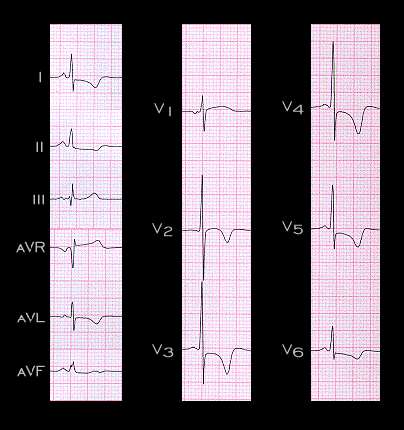
The giant inverted T waves that were shown in association with both the CVA pattern and with a prior ischemic event (see pages 6.3.7 and 6.3.5) may also occur in other situations. The ECG shown here is from a 54 year old male with long-standing hypertension but no evidence of ischemic heart disease. His coronary angiogram was normal. These T wave changes are due to left ventricular hypertrophy resulting from the hypertension.
